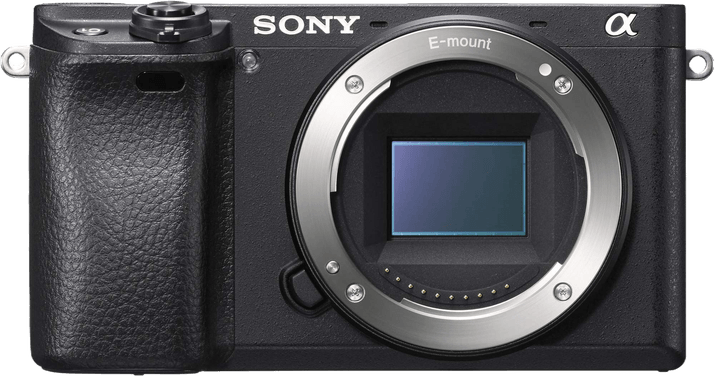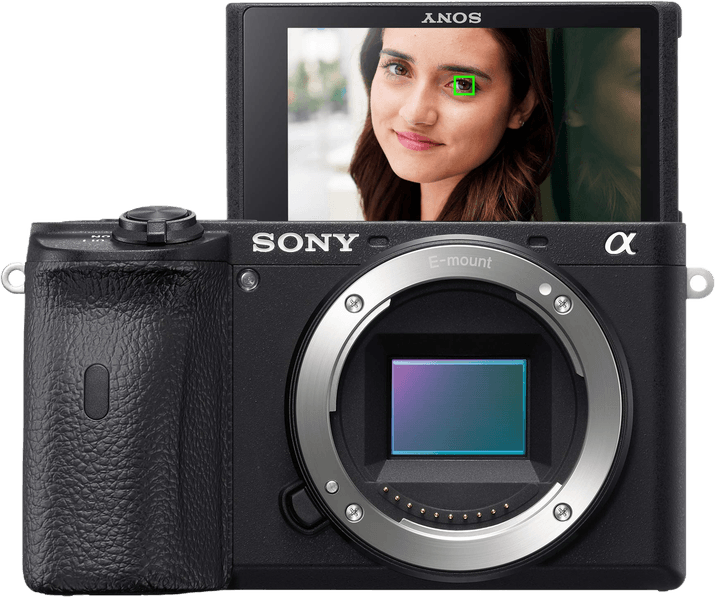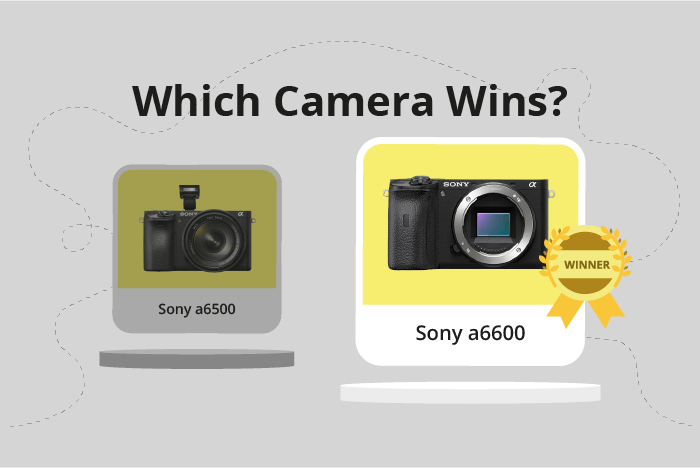Sony a6500 vs a6600 Comparison
Sony a6500

Sony a6600

The Sony a6600 outperforms the Sony a6500 with a score of 75/100 compared to the latter’s 72/100. Both cameras share similarities as they are mirrorless and have the same dimensions of 120 x 67mm. However, the a6600 is slightly thicker at 69mm and heavier at 503g.
The a6600 offers better value with a lower launch price of $1200 compared to the a6500’s $1400. Its higher score also indicates that it provides improved features and performance. On the other hand, the a6500 is lighter at 453g, which could make it more portable for some users.
Taking all factors into account, the Sony a6600 stands out as the better option due to its enhanced performance and more accessible price point. However, the Sony a6500 may still appeal to those who prioritize a lighter camera.
Sony a6500 vs a6600 Overview and Optics
The Sony a6600 emerges as the winner in optics with a score of 76/100, while the Sony a6500 trails closely with a score of 74/100. Both cameras share several specifications, including 24.2 megapixels, an 11fps shooting speed, a CMOS sensor type, a Bionz X processor, an APS-C sensor size, a Sony E lens mount, and built-in image stabilization.
The Sony a6600’s superiority lies primarily in its overall optics score. Although both cameras have the same megapixel count and shooting speed, the Sony a6600 outperforms the a6500 by a slim margin. This indicates that the a6600 delivers slightly better image quality, which can be crucial for professional photographers and enthusiasts alike.
On the other hand, the Sony a6500 does have one advantage over the a6600, which is its higher DXOMARK score for the sensor at 85, compared to the a6600’s score of 82. This means that the a6500’s sensor performs better in terms of dynamic range, color depth, and low-light performance. However, this advantage is not enough to overshadow the a6600’s overall better optics performance.
In comparing the Sony a6500 and a6600, it is clear that the a6600 has a slight edge in terms of optics performance. While both cameras share many specifications, the a6600’s higher overall optics score makes it the better choice for those seeking superior image quality. However, the a6500’s higher DXOMARK sensor score should not be overlooked, as it may be more suitable for photographers who prioritize dynamic range and low-light performance. Ultimately, the choice between these two cameras will depend on individual preferences and priorities.
Sony a6500 vs a6600 Video Performance
The Sony a6600 outperforms the Sony a6500 in terms of video capabilities, with a video score of 91/100 compared to the a6500’s score of 77/100. Both cameras share some common video specifications, including a maximum video resolution of 4K and maximum video dimensions of 3840 x 2160.
However, the a6600 surpasses the a6500 in several aspects. One significant advantage of the a6600 is its built-in time-lapse functionality, which is absent in the a6500. This feature allows users to create stunning time-lapse videos without needing additional software or accessories. Additionally, the a6600 has a maximum video frame rate of 100fps, which, although lower than the a6500’s 120fps, still provides smooth and high-quality footage.
On the other hand, the Sony a6500 excels in its maximum video frame rate of 120fps. This higher frame rate can be useful for capturing fast action scenes or creating slow-motion videos. However, this advantage is not enough to outweigh the benefits offered by the a6600’s other superior features.
Taking into account the differences in video capabilities, it is evident that the Sony a6600 is the better choice for videographers. Its built-in time-lapse functionality and overall higher video score make it a more versatile and powerful camera for capturing high-quality video content. While the a6500’s higher frame rate is a plus, it does not compensate for the a6600’s additional features and better overall performance.
Sony a6500 vs a6600 Features and Benefits
The Sony a6500 and Sony a6600 both have a feature score of 81 out of 100, making them equal in terms of their overall feature set. They share many specifications, including a 3-inch screen size, screen resolution of 921,600 dots, touchscreen capability, flip screen, and lack of GPS. Both cameras also have WIFI and Bluetooth connectivity.
Despite having the same feature score, there are certain aspects where one camera outperforms the other. The Sony a6600 is superior in terms of its autofocus system, battery life, and ergonomics. These improvements make the a6600 a more reliable and convenient option for photographers and videographers who require a camera with advanced performance capabilities.
On the other hand, the Sony a6500 has a slightly smaller and lighter body, which can be advantageous for those who prioritize portability and ease of use. However, this advantage does not outweigh the benefits offered by the a6600, as the latter camera’s improved autofocus and battery life are crucial for capturing high-quality photos and videos.
Taking these factors into account, it is evident that the Sony a6600 offers more value and functionality to users. Its advanced autofocus system, longer battery life, and improved ergonomics make it a superior choice for those seeking a reliable camera with a robust feature set. The Sony a6500, while still a strong contender, falls short in these crucial areas, making the a6600 the preferred option for photographers and videographers alike.
Sony a6500 vs a6600 Storage and Battery
The Sony a6600 outperforms the Sony a6500 in storage and battery, scoring 48/100 compared to the a6500’s 21/100. Both cameras share similarities in storage, having a single memory card slot and accepting SD/SDHC/SDXC and Memory Stick Pro Duo cards.
The a6600’s superior performance is due to its impressive battery life and charging capabilities. With 810 shots per charge, the a6600 nearly doubles the a6500’s 350-shot battery life. Additionally, the a6600 uses the NP-FZ100 battery, while the a6500 relies on the NP-FW50 battery. The a6600 also offers USB charging, a feature the a6500 lacks.
The a6500 does not have any advantages in storage and battery compared to the a6600. Its lower score reflects its lesser battery life and absence of USB charging.
Considering these factors, the Sony a6600 is the clear winner in storage and battery, making it a more reliable and convenient choice for extended shooting sessions and on-the-go photographers.
Alternatives to the Sony a6500 and a6600
Are you still undecided about which camera is right for you? Have a look at these popular comparisons that feature the Sony a6500 or the Sony a6600:

